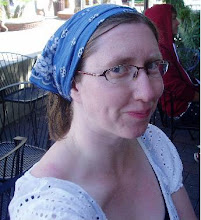Hangover Prevention
Study
DeBurgh, Katharine E., MPH; Davis, Nathan M.
Introduction
The purpose of this study was to test two recently
introduced hangover prevention tools: The NoHo hangover defense drink and the
After Burner hangover prevention patch.
Methods
Researchers recruited fifteen individuals to participate.
All participants were known to the research team, lived in or near Sacramento,
California, and were Caucasian. Six (40%) were female and nine were male. After
arriving at the study, participants were assigned a code by Researcher 1.
Researcher 1 delivered this code to Researcher 2, who remained behind a
partition. Not knowing the identities of the participants, using a 4-sided die,
Researcher 2 randomly assigned each participant into one of four groups: NoHo
beverage, placebo beverage, After Burner patch, or placebo patch. Researcher 2
then delivered the selected intervention to the participant through an opening
in the partition. Both real and placebo beverages were served in an opaque cup
to limit participant’s scrutiny; and both real and placebo patches were applied
to participants’ skin underneath a layer of duct tape.
The following day, via text message or, when no response was
received, via in-person interview, the participants were asked three questions:
·
On a scale of 1 to 10, how drunk were you last
night? One is not drunk at all, ten is the most drunk you’ve ever been.
·
Based on that level of drunkenness, on a scale
of 1 to 10, how hungover did you expect to be? One is not hungover at all, ten
is the most hungover you’ve ever been.
·
On a scale of 1 to 10, how hungover are you in
reality? One is not hungover at all, ten is the most hungover you’ve ever been.
Only after all this data had been gathered was Researcher 2
given access to the codes revealing which participant had received which
intervention.
Results
Overall, participants reached an average drunkenness level
of 6.7. The average expected hangover
level was 4.9; the average hangover level in reality was 3.5. Participants
tended to expect a higher level of hangover when they experienced a higher
level of drunkenness. The participants did, in general, experience a higher
level of hangover with a higher level of drunkenness, but the hangover was
generally not as severe as expected.
Table One: Drunkenness,
Expected Hangover, and Actual Hangover
Intervention
|
Drunkenness Level
|
Expected Hangover
|
Actual Hangover
|
After Burn Patch
|
7.3
|
6.3
|
3.7
|
NoHo Beverage
|
6.4
|
4.3
|
3.8
|
Placebo
|
6.7
|
4.8
|
3.2
|
Total
|
6.7
|
4.9
|
3.5
|
Table 1 (cont’d)
Intervention
|
Difference Between
Drunkenness and Hangover
|
Difference Between
Expectation and Hangover
|
After Burn Patch
|
3.7
|
2.7
|
NoHo Beverage
|
2.7
|
0.6
|
Placebo
|
3.5
|
1.6
|
Total
|
3.2
|
1.4
|
The average difference between expected hangover and actual
hangover was 1.40, indicating that, in general, hangovers were less severe than
expected. For those who received the After Burner patch, the difference was
2.67, indicating a high level of effectiveness. The placebos resulted in an
average difference between expected and actual hangover of 1.6. The NoHo
beverage resulted in an average difference between expected and actual hangover
of 0.6.
Discussion
The participants who received the placebos had the lowest
level of hangover. However, the After Burn patch resulted in the highest
difference between the expected hangover and actual hangover. The NoHo beverage
performed worse in all respects than both the patch and the placebos.
There are several problems with the data collected during
this study. The sample size was small and non-diverse. Therefore, the results
of this study cannot be generalized beyond the sample population. Furthermore,
while every attempt was made for a double-blind study, Researcher 2 did
recognize two of the participants through unavoidable recognition of physical
characteristics. This may have resulted in some bias in the results.
Conclusion
The NoHo hangover defense beverage was found to be less
effective than the After Burner patch and less effective than a placebo. While
the After Burner patch resulted in a slightly higher level of hangover than the
placebos, it resulted in the highest difference between expected and actual
hangover. Therefore, the After Burner patch may be an effective hangover
prevention method.
Neither Ms. DeBurgh
nor Mr. Davis received any financial consideration for this study; nor do they
have any financial relationships with the industries being discussed.

Nice post. Hangover is the common problem after drinking. To avoid hangover take one shot of herbal
ReplyDeletehangover cure drink. This shot help to prevent hangover.
Great post! A hangover is a common issue after drinking, but you can prevent it by taking one shot of Dotshot - Anti Hangover Drink. This shot acts as an effective anti hangover cure, helping to minimize the chances of a hangover.
ReplyDelete